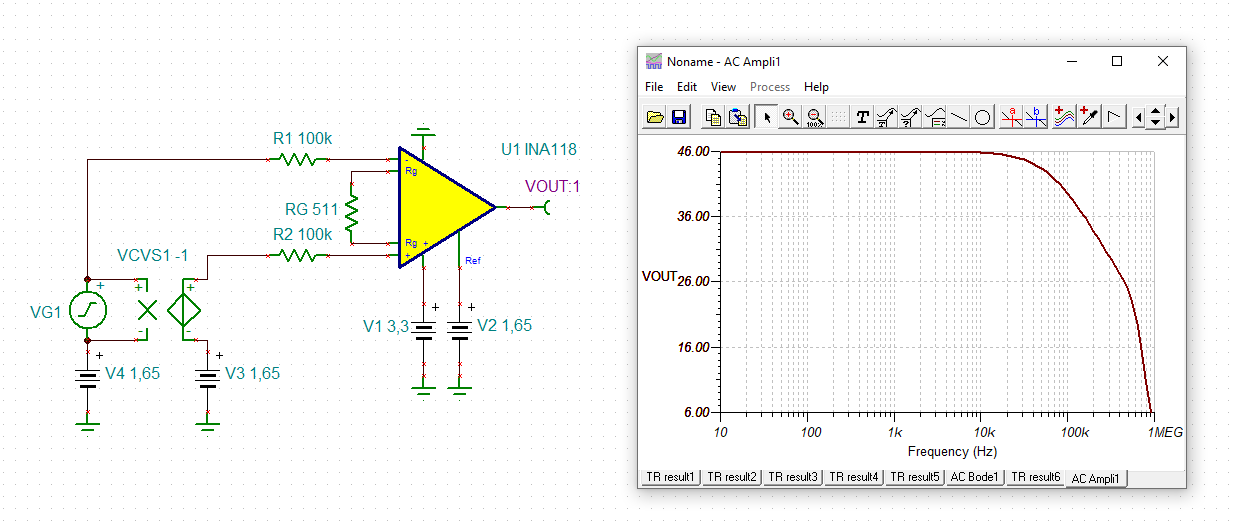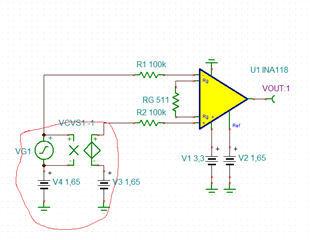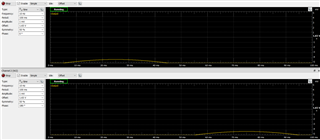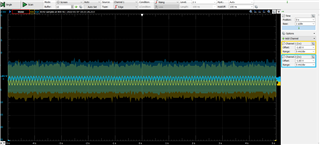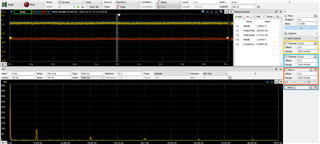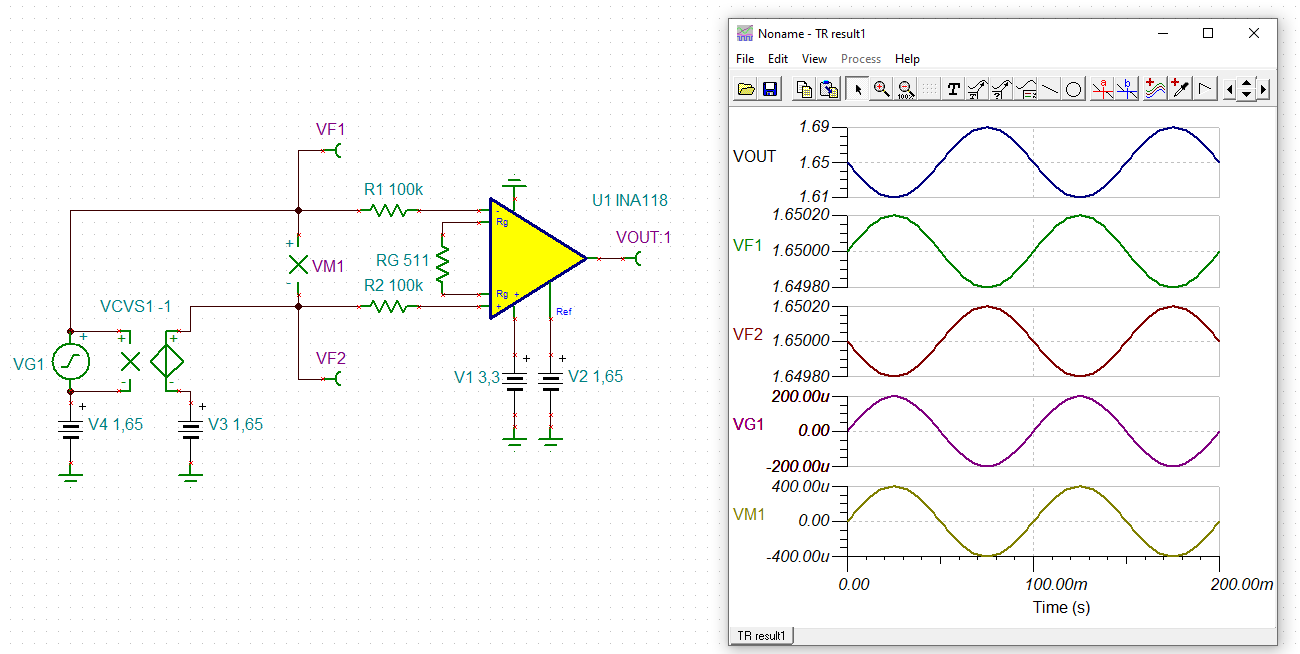Other Parts Discussed in Thread: TINA-TI
Hi,
I'm building a circuit intended for use with an EEG product (you may as well consider this irrelevant, i'm using signal generator signals to input simulated, oversized EEG signals, to verify the circuit, before even going near real EEG signals, just consider this an ordinary amplifier circuit).
The schematic is shown below:
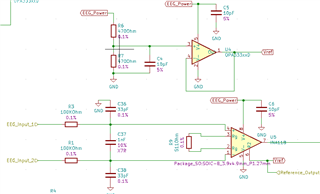
I've used the TI analogue engineers calculator to determine the relationship between VCM and VOUT. As shown below:
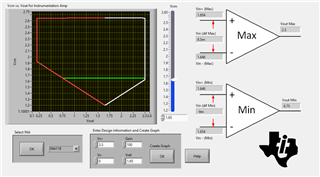
With this considered the amplifier should operate just fine with the following 2 input signals
As you can see below, i've used the signal generators to add an offset to each wave input to act as a common mode input to each signal, they are out of phase so as to create a fully differential signal.
Channel 1 sig gen, is attached to the non-inverting input. Channel 2 sig gen is attached to the inverting input.
HAVE I CONFIGURED THIS CORRECTLY TO GENERATE THE 1.65V VCM & 200uVSIN(wT) VDM?

The output is shown below. The yellow trace is the output of the INA118 and the blue trace is attached to the vref pin. The red trace is a simple math channel, not really relevant, but adds some context.

This is a very simple circuit, thus i have 2 very simple questions.
1: Why is the output signal, shown above in yellow, not centered around VREF, the blue trace. Note that if i switch the two input signals, the yellow output trace appears above the blue reference trace instead. Could this be an issue with the Digilent AD2 im using s a signal generator & scope.
2: Gain appears to be incorrect, as the circuit should have a gain of 100. & I'm seeing no changes in the amplitude of the output signals until the input reaches 300uV (then the output behaves a little more realistically).
I've tried all the obvious things, calibrating probes, swapping the silicon, i do have my doubts about the AD2...
Any thoughts appreciated.
Thanks,
Sean



